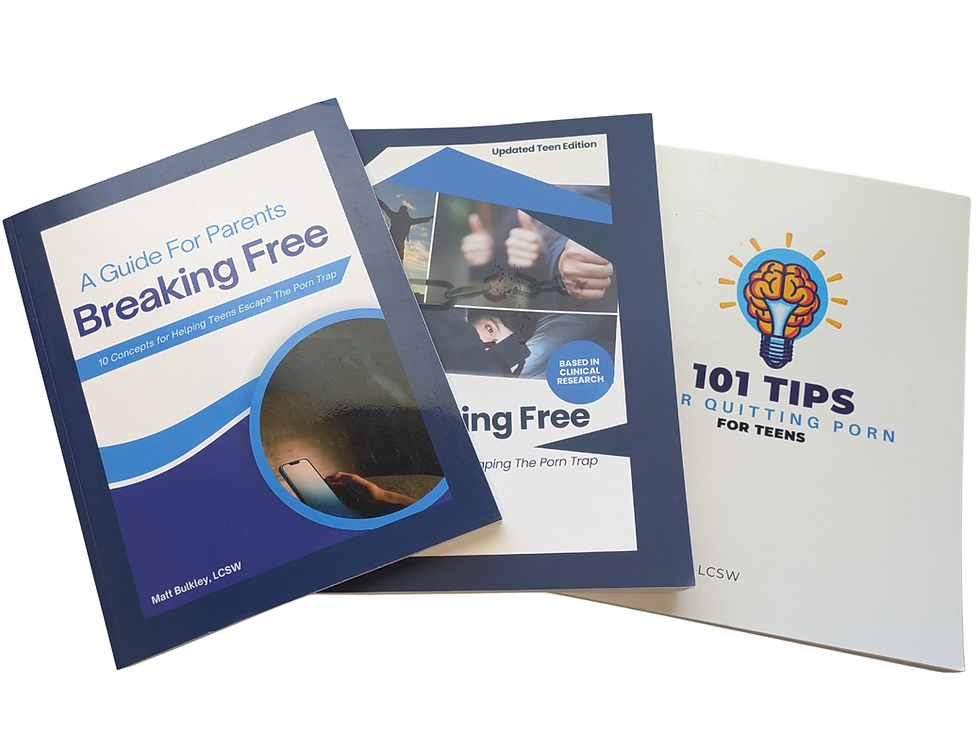A Simple Strategy to Support Your Teen’s Recovery from Pornography Addiction: Get Out of the House
- Matt Bulkley

- Jun 28
- 4 min read
As a parent, watching your teen struggle with pornography addiction can feel overwhelming. You want to help them break free, but knowing where to start isn’t always clear. One powerful, research-backed strategy is surprisingly simple: encourage your teen to spend less time alone at home and more time in public spaces like libraries, parks, or cafés. This small change can make a big difference in their recovery journey. Here’s why it works and how you can guide your teen to embrace it.
Why Being Home Alone Can Be Risky
When teens are home alone, they’re more vulnerable to relapse. Studies, such as those published in the Journal of Addiction Research & Therapy, highlight that isolation is a major trigger for addictive behaviors. Without distractions or accountability, the quiet of an empty house can amplify temptation, especially when paired with easy access to screens. In contrast, public environments naturally shift their focus. The presence of others—whether it’s a librarian, fellow café-goers, or passersby in a park—creates a subtle layer of accountability that discourages unhealthy choices.
Research from the Psychology of Addictive Behaviors supports this. Teens who spend time in social or public settings are less likely to fall back into addictive patterns. Being surrounded by people and activity helps quiet the urges that thrive in solitude. It’s not about distrusting your teen; it’s about helping them avoid situations where old habits can creep in.
What the Experts Say
Therapists and addiction counselors often recommend this “change of scene” approach as a cornerstone of recovery. By swapping the familiarity of home—where triggers like boredom or stress may linger—for a public space, teens can disrupt the cycle of temptation. Addiction Recovery Management reports show that individuals who spend time in busy, public environments have higher success rates in maintaining recovery. The reason is simple: it’s harder to act on impulses when others are around, even if they’re strangers. A library’s quiet bustle or a café’s background chatter can act as a natural deterrent, helping your teen stay focused on healthier activities.
The Hidden Benefits of Public Spaces
Beyond reducing temptation, spending time in public places can actually improve your teen’s mood and resilience. According to research in Environmental Psychology, being in dynamic environments—like a library filled with books or a park with fresh air—can lower stress and boost positive emotions. These are critical for recovery, as stress and negative feelings are common relapse triggers. A trip to the library might lead your teen to discover a new book or hobby, while a walk in the park could inspire moments of calm and reflection. These small, positive experiences can build their confidence and reinforce their commitment to change.
How to Encourage Your Teen
Helping your teen adopt this strategy starts with open communication and support. Here are a few practical steps you can take:
Talk About the Why: Share the idea that changing their environment can help them stay strong in their recovery. Frame it as a proactive way to take control, not as a restriction. For example, you might say, “I read that spending time in places like the library can make it easier to stay focused on your goals. Want to try it out together?”
Make It Fun: Help your teen find public spots they enjoy. Suggest a cozy café with great snacks, a library with a teen lounge, or a park where they can listen to music or sketch. Highlight the perks, like discovering new books or just enjoying a change of scenery.
Set Up Structure: Work with your teen to plan their time. For instance, if they’re usually home alone after school, suggest heading to the library to do homework or joining an after-school club. Offer to drop them off or join them occasionally to make it feel collaborative.
Celebrate Small Wins: Acknowledge their efforts, whether it’s spending an afternoon studying at the library or meeting friends at a community center. Positive reinforcement can motivate them to stick with it.
Model the Behavior: Show them it’s normal to enjoy public spaces. Invite them to join you for a coffee shop work session or a walk in the park. This can normalize the habit and make it feel less like a “rule” and more like a lifestyle choice.
A Step Toward Lasting Change
Encouraging your teen to trade solo time at home for time in public spaces isn’t just about avoiding temptation—it’s about empowering them to build a healthier, more connected life. Backed by science and expert insights, this strategy can help your teen stay on track while discovering new interests and strengths. By supporting them in making this simple change, you’re giving them a practical tool to navigate their recovery with confidence.
If you’re looking for more ways to support your teen, visit our website for expert tips, resources, and encouragement to help your family navigate this journey together. Let’s work toward a brighter future for your teen—one step at a time.










Comments